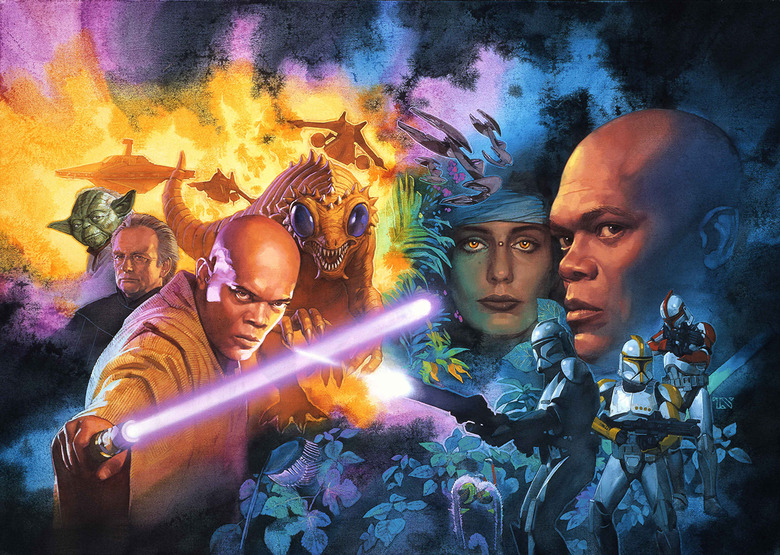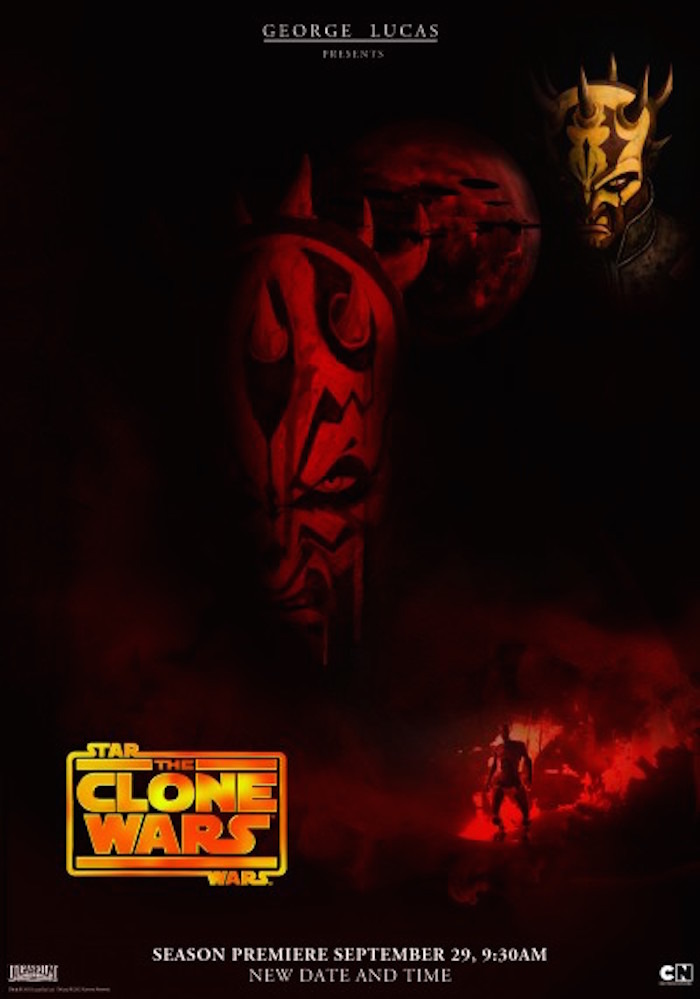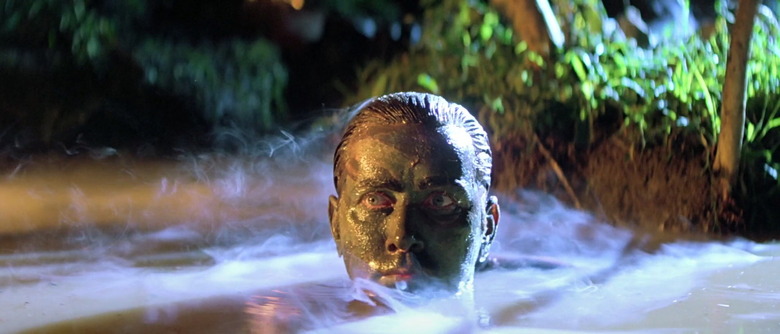'Star Wars' And 'Apocalypse Now' Overlap More Often Than You'd Think
(Welcome to The Movies That Made Star Wars, a series where we explore the films and television properties that inspired or help us better understand George Lucas' iconic universe. In this edition:Apocalypse Now.)
Francis Ford Coppola's Apocalypse Now is a frenetic look into the final days of the Vietnam war. Where other films might have looked at the war from a more classic war film perspective, Coppola brought an insanity to it that matched how many felt about the conflict. Martin Sheen stars as Captain Willard, assigned to seek out Colonel Kurtz (Marlon Brando), deep behind enemy lines. His journey is insane, like any war might be. There's no comfort to be had there, only madness. Based loosely on Joseph Conrad's Heart of Darkness, the John Milius script and Coppola's documentary style of filmmaking made this film an instant classic, pushing us into dark places we'd rather pretend war doesn't take us.
There are a lot of interesting things about the making of Apocalypse Now, it's an incredible film and was made in an incredibly unorthodox way, but maybe the most interesting thing about Apocalypse Now in the context of Star Wars was that it was originally going to be a George Lucas film.
American Zoetrope
After the success of Francis Ford Coppola's The Rain People in 1969, Warner Brothers gave the young filmmaker a development deal for him and his production company. One of the films he proposed to produce was Apocalypse Now, written by John Milius and directed by his friend, George Lucas. The film was intended to be shot on a shoestring budget in Stockton, California. Lucas was going to use 16mm black and white film (American Graffiti was also shot on 16mm film) and it would be a little bit more of a dark comedy than what came to pass. Coppola's relationship with Warner Brothers strained and the film went into a purgatory of development. George Lucas ended up leaving the project because he wanted to write something of his own and make it. That film turned out to be Star Wars.
Coppola ended up filming the movie in 1976, before Star Wars, and including a nod to Lucas in the film. In fact, Colonel G. Lucas is a character played in the film by none other than Harrison Ford.
Shatterpoint
Though Lucas definitely had an impact on the development of Apocalypse Now, Apocalypse Now absolutely had an impact on the texture of the Star Wars. The film was a watershed moment in war films and, naturally, it affected all films and war stories after its release and Star Wars was no exception. The first, most tangible influence came in the form of literature, though.
Matthew Stover's 2003 novel Shatterpoint might be one of the finest examples of Star Wars literature in the first place, but it draws heavy inspiration from both Apocalypse Now and Conrad's Heart of Darkness. Shatterpoint was one of the first books in the Expanded Universe to take place during the Clone Wars, and centered around Jedi Master Mace Windu as he ventured to the very Vietnam-like jungle planet of Haruun Kal. Instead of going to rescue Marlon Brando, he went to rescue his former Padawan, Depa Billaba. Like Colonel Kurtz, though, she'd suffered a mental break and needs someone to bring her back into the light. She's been lured to the dark side of the Force, and he must journey through the darkness to bring her back or kill her.
The book exudes the same brooding as the film and so much of the same soul-searching and I would recommend any fan of Apocalypse Now and Star Wars read it.
Though the book was transferred to the Legends timeline in 2014, there have been a number of hints included in the canon that wink and nod to it to let us know it's still thought of as something that happened. Depa Billaba was the master of Kanan Jarrus, a character created for Star Wars Rebels. In the comic that documented their first and last days together before Order 66, Depa Billaba comes out of the coma that she's left in at the end of Shatterpoint.
Walter Murch
Shatterpoint wouldn't be the last time Apocalypse Now influenced Star Wars. The next direct influence came in the fourth season of Star Wars: The Clone Wars. The Umbara arc is considered one of the darkest arcs on the entire show. It takes as many cues form Stanley Kubrick's Paths of Glory as it does from Apocalypse Now, but one episode actually shares a key crew member with the classic war film.
Walter Murch was one of the editors and sound editors on Apocalypse Now. In fact, he won his first Academy Award for his work on the sound on the film, though he lost out on the editing to Alan Heim, the editor of All That Jazz. The editing was legendary and I would highly recommend reading his treatise on editing, In the Blink of An Eye, which documented some of the struggle he went through in cutting the film. He talks about the war they fought just to get the movie edited since Coppola had shot so much film on the project and how many false starts and dead ends they found. For any student of the art of editing, the stories he recounts are must-read material.
Murch went on to direct movies like Return to Oz and eventually found his way to The Clone Wars. "The General," the eighth episode of the fourth season of The Clone Wars,tells the dark tale of a Jedi General turned dark, very much a Kurtz-like character. He's senselessly sending the clones in his command to the slaughter and Murch, the Apocalypse Now veteran, brings the same bleak restlessness from Coppola's film into the world of Star Wars. The entire arc is one of the best they were able to do on the show and really steeps itself in the sort of dark madness that Apocalypse Now dealt with.
Maul and Savage
But that wouldn't be the last time The Clone Wars saw themes from Apocalypse Now creep into the show. Later in the season, Savage Opress, the brother of Maul, was sent on a Willard-like quest to seek out his brother who was long thought dead. Through the galaxy he travels until he finds Maul, like Kurtz, steeped in shadow and madness. Maul, however, comes back from the horror and we all know how that ended.
The Apocalypse Now themes were displayed front and center during the promotion of Maul's return. The poster advertising it was a straight homage to the poster of Colonel Kurtz's melting face for the Coppola film.
Apocalypse Now
Apocalypse Now is practically mandatory viewing for students of '70s cinema, war cinema, and now fans of Star Wars. It's odd to think a film so quirky and dark could find itself embedded in a galaxy far, far away, but it proves the versatility of the Star Wars canvas to see these themes adapted so faithfully without breaking it.
Apocalypse Now is currently available to stream for a modest fee at most streaming rental sites. The Clone Wars is still streaming as part of a Netflix subscription. Shatterpoint and In the Blink of An Eye are available wherever books are sold.



